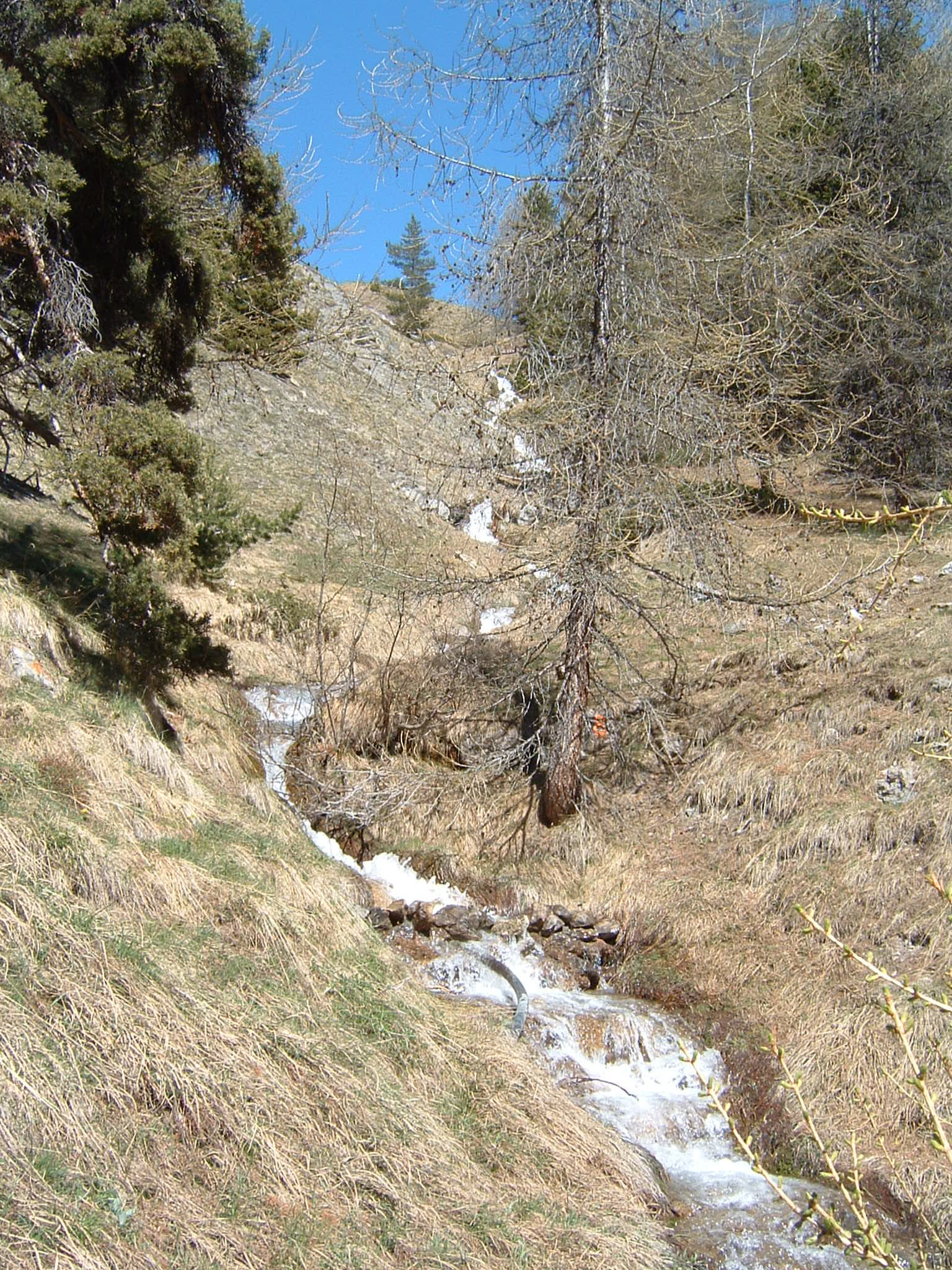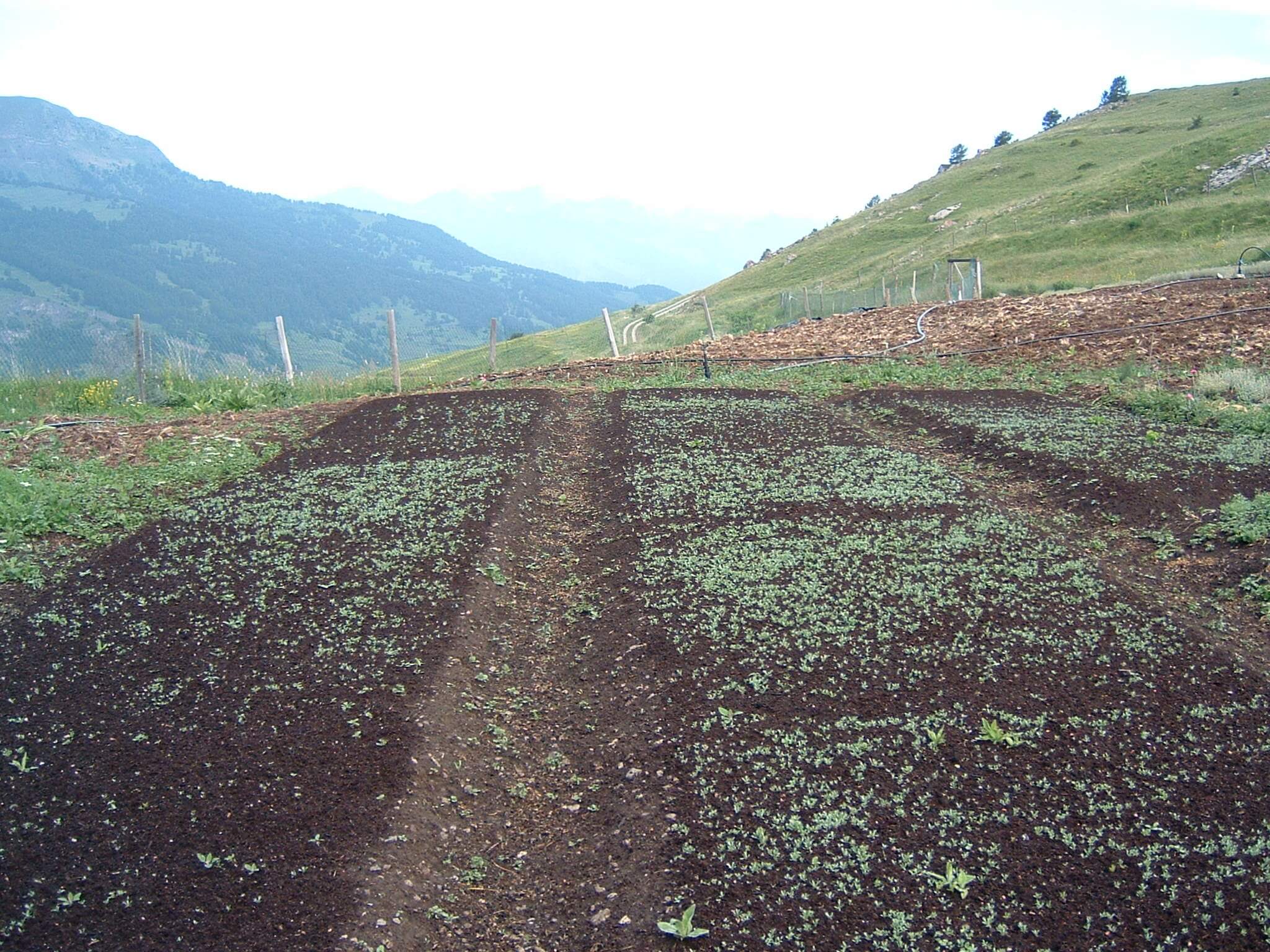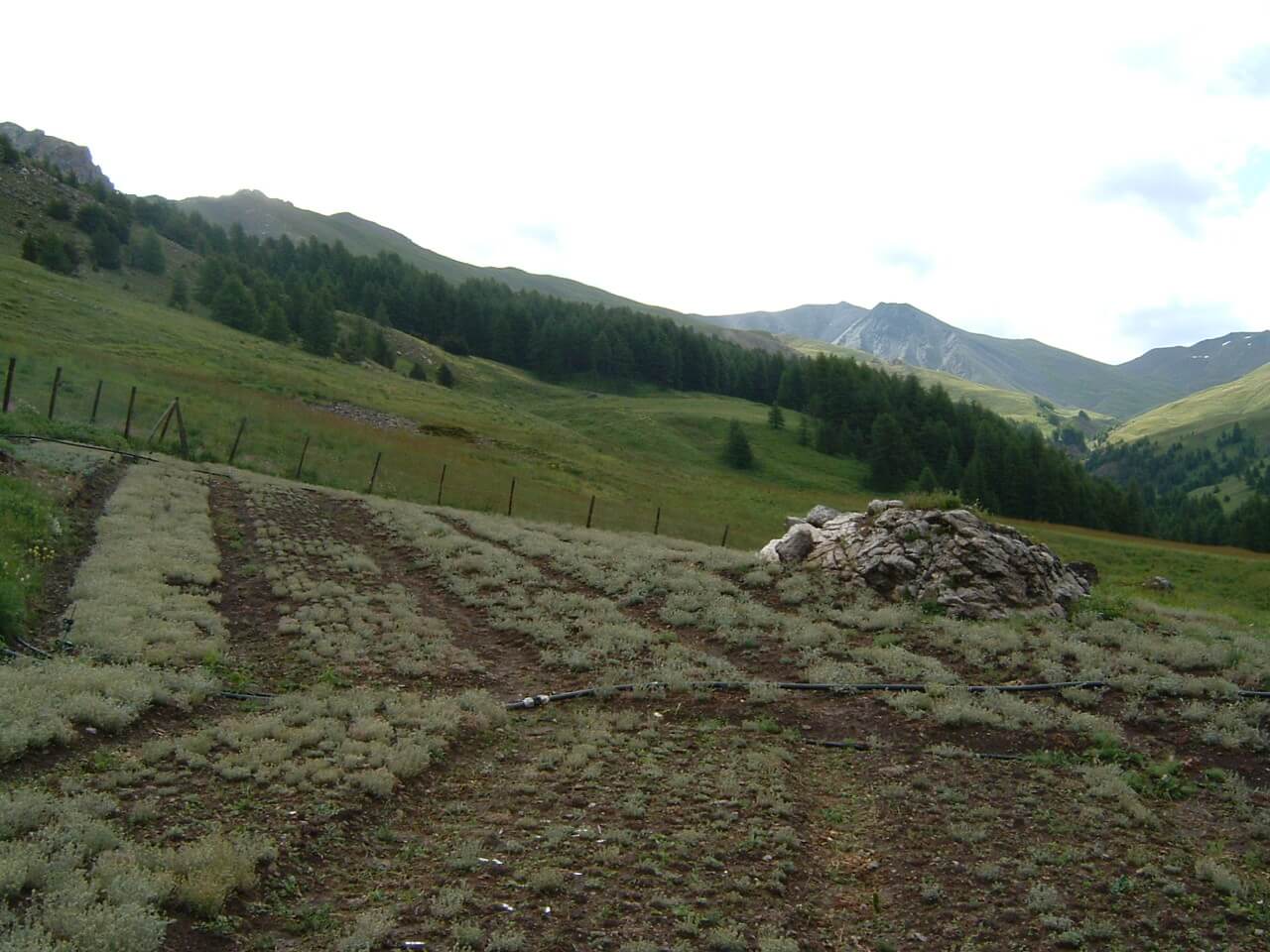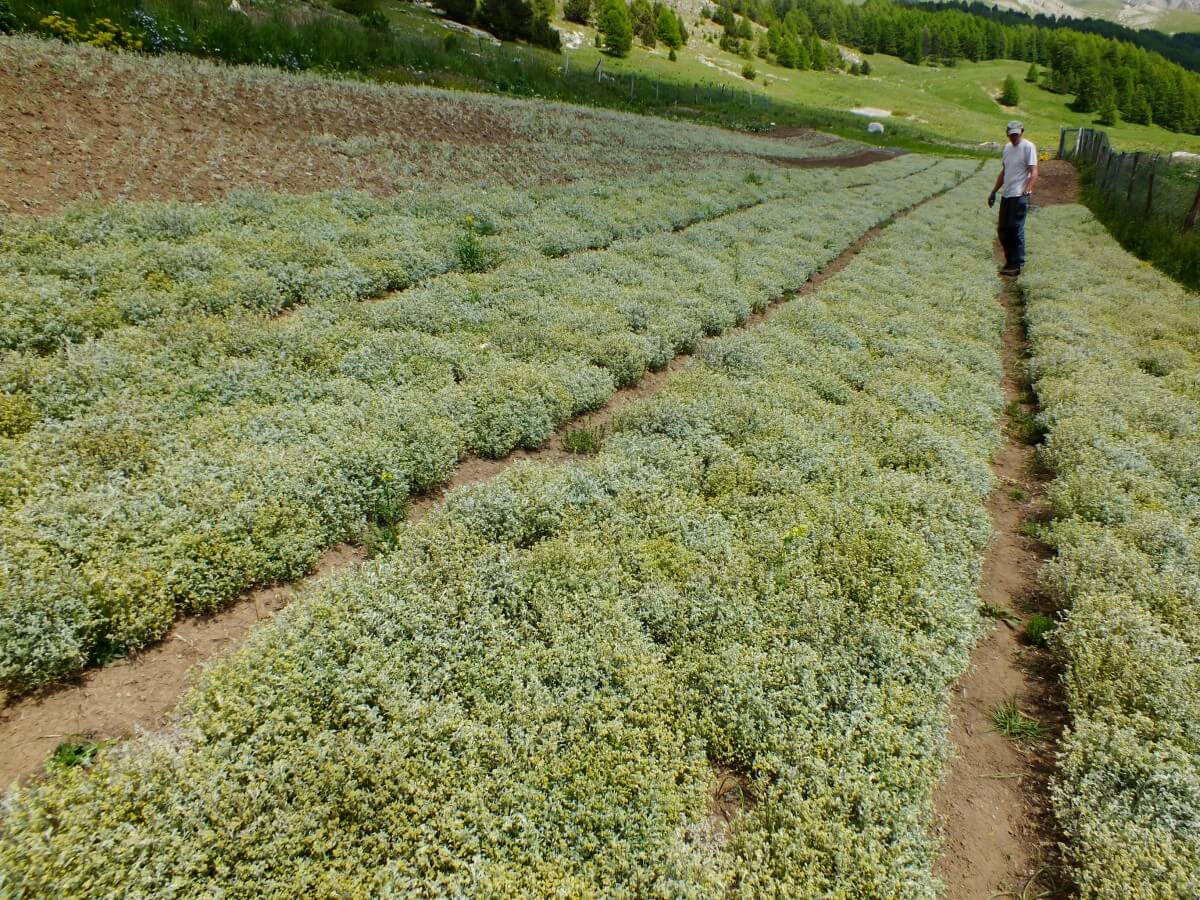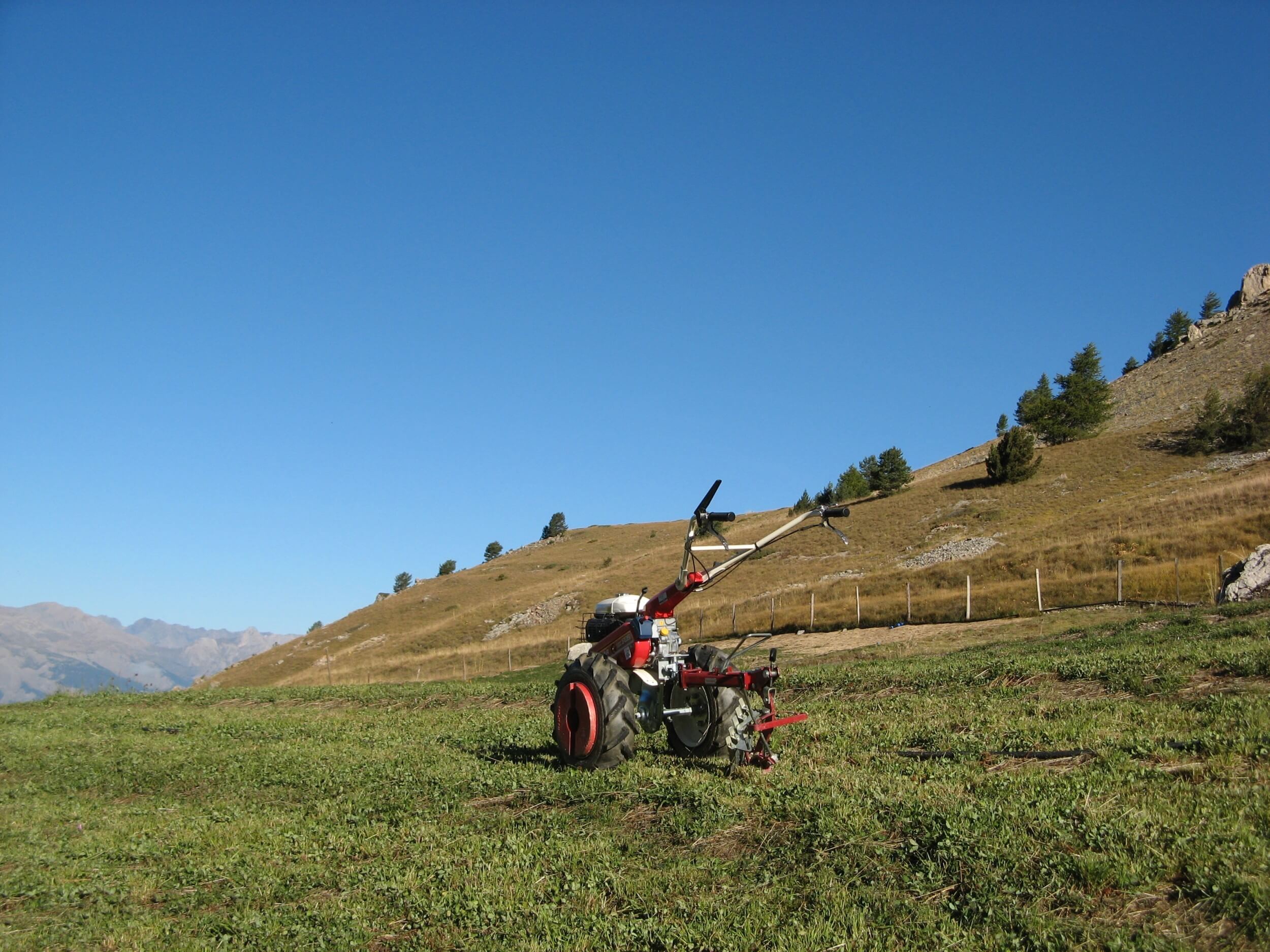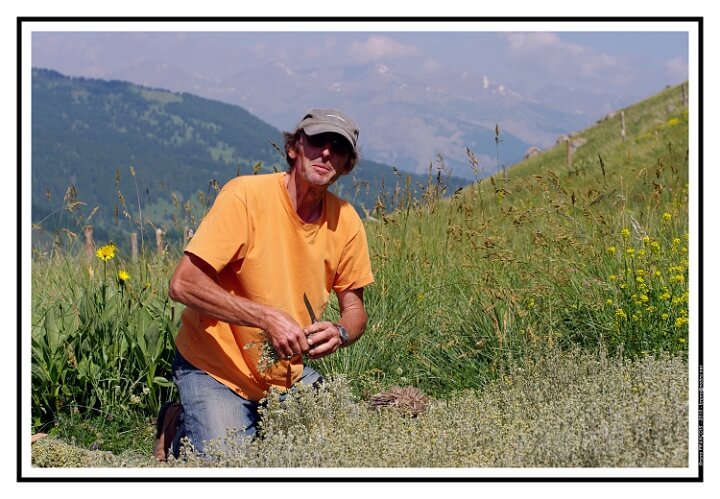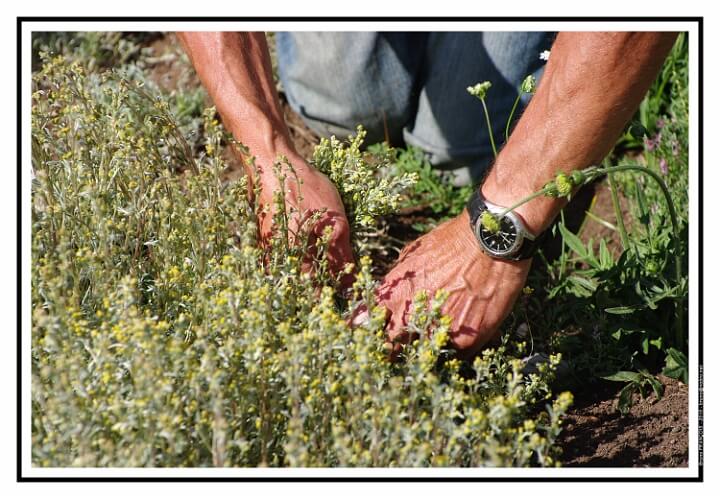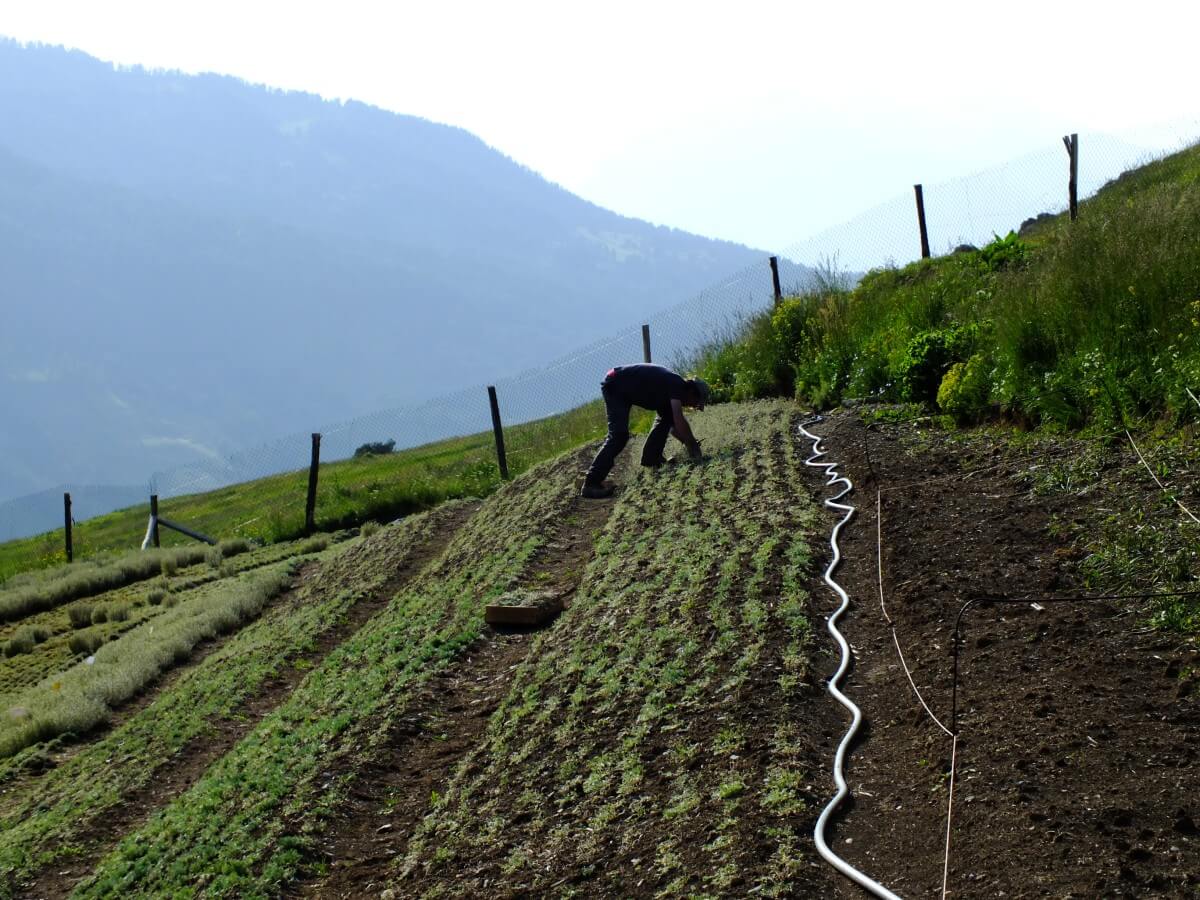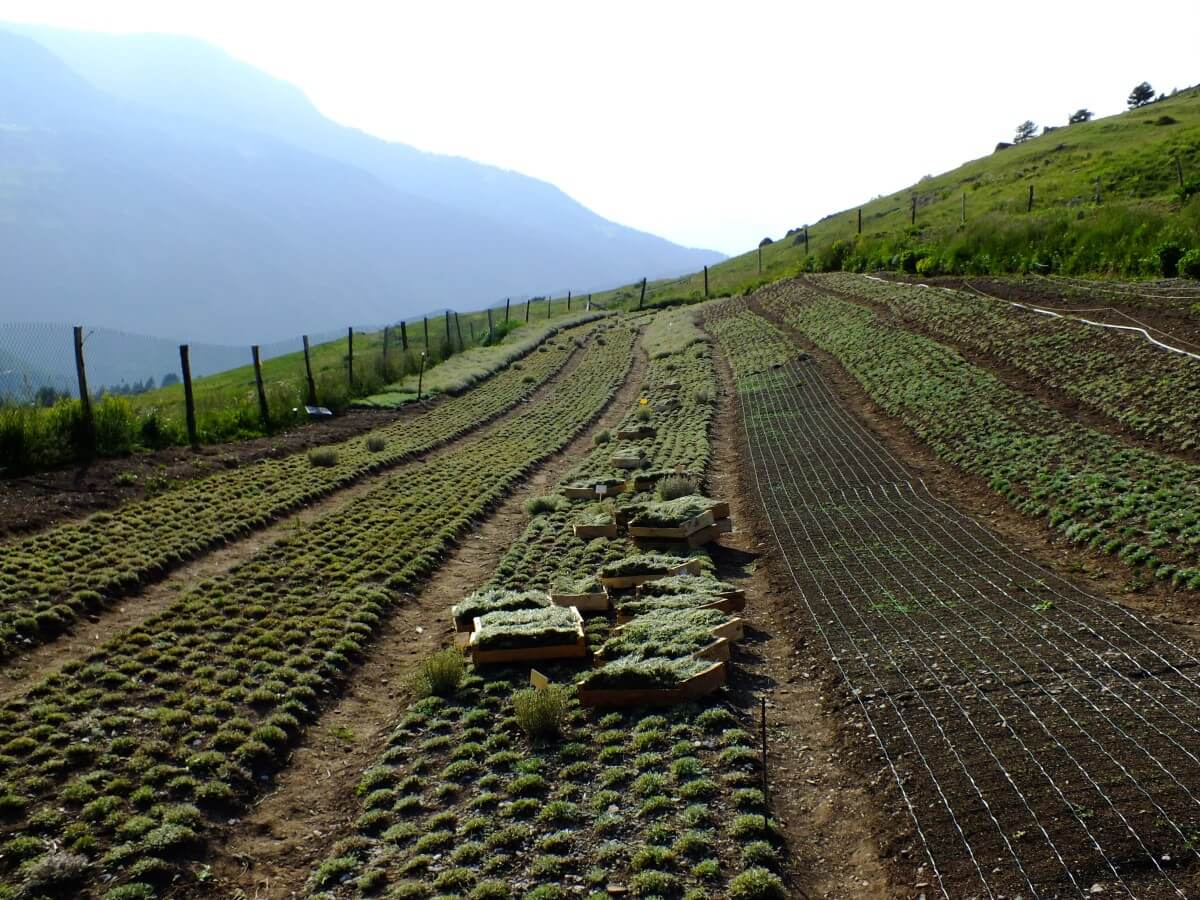A Different Kind of Cultivation
 Sowing is done under a shade cloth.
Sowing is done under a shade cloth. Seedlings emerge from the soil.
Seedlings emerge from the soil. The next spring, we translpant them in beds.
The next spring, we translpant them in beds. Rows of 1-, 2- and 3-years beds.
Rows of 1-, 2- and 3-years beds. The stems are ready to reach for the sky!
The stems are ready to reach for the sky! So it's time to harvest génépi!
So it's time to harvest génépi! The génépi plants will dry for the rest of the summer. The larches turn a golden hue: Fall is here already.
The génépi plants will dry for the rest of the summer. The larches turn a golden hue: Fall is here already. The first snow is here, génépi gets ready for a long sleep.
The first snow is here, génépi gets ready for a long sleep. The fields is cloaked in a blanket of snow. See you next year!
The fields is cloaked in a blanket of snow. See you next year!
I work both in Vars (2,100 meters altitude) and in Châteauroux-les-Alpes (1,200 meters altitude). I used to do my sowing in Châteauroux, but now I do everything in Vars.
Though the seeds spend the winter at my house, my génépi plants live their whole life at high altitude where they grow in the most natural may and synthetize their active principles from the soil and the sun (which shines 300 days a year in here!).
In Vars
After years of trial-and-error, I selected a plot in Vars (Hautes-Alpes), near the Coulette pass, for my génépi cultivation. It is ideally oriented (south-facing) and at an altitude of 2,100 meters. This mountain pasture seemed perfect for my needs. Today, I can say I wasn't wrong!
Since 2008, I tap directly into the Chagnon mountain stream (700 meters from my plot) for spraying.
But watering needs to be sparse. Too much water can harm the plants and favor diseases. In fact, génépi only needs water right after the planting or during long drought periods. A well-drained soil maintains an ideal hydrometric level.
The beds are turned back into pasture for 6 to 10 years. This allows for excellent soil regeneration.
By the way: weeding is done by hand. I use only 100% organic fertilizer and I use it carefully: its purpose is to maintain good soil fertility, not to "fatten" the plants.



